By Marilyn Homewood, Master Gardener
In 1696, a Sicilian monk discovered a vividly coloured flower with a bountiful fragrance in the hills surrounding the monastery. He transplanted it into his garden to grow on and was soon sending seeds from these transplants to other countries. He had discovered the sweet pea (Lathyrus odoratus). This variety is still readily available today and is known as Cupani’s original.
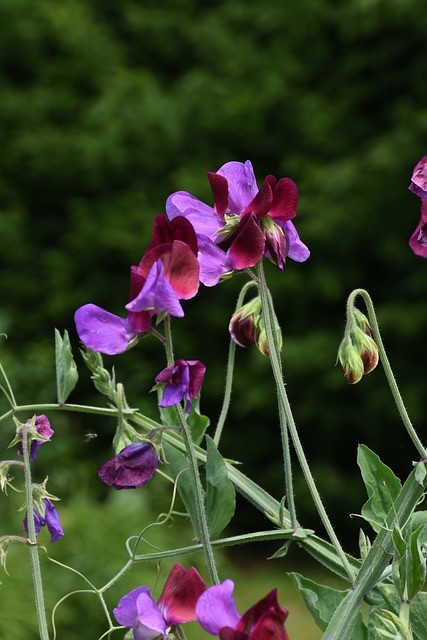
Over the subsequent years, plant breeders (especially in England) went onto develop numerous varieties and by 1910, the sweet pea was considered one of the most popular annual flowers under cultivation. It was often a garden favorite here in Ontario. Unfortunately, the sweet pea is not featured as often in our gardens. Our changing climate (more heat, less rain) has made it more of a challenge to grow this plant successfully. However, it can be done with a little planning.
Sweet peas are plants that thrive in cool weather and can withstand a fair degree of frost. I aim to plant mine outside 4-6 weeks before the last frost. This gives them time to establish a strong root system when temperatures are moderate and moisture plentiful. This also helps them to withstand the high temperatures of summer.
Sweet peas are deep rooted even as seedlings and need to be potted into a large container such as a 4 inch pot. My preference is to use “root trainers”. These are containers that open like a book, are five inches in depth and are have longitudinal grooves in their sides. These grooves encourage roots to grow straight down and prevent root circling. When it comes time to plant our, you just open up the trainer and lift out the plant intact.
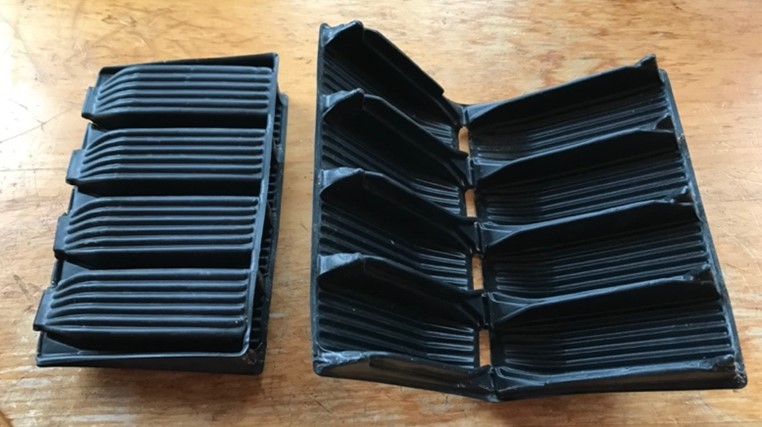
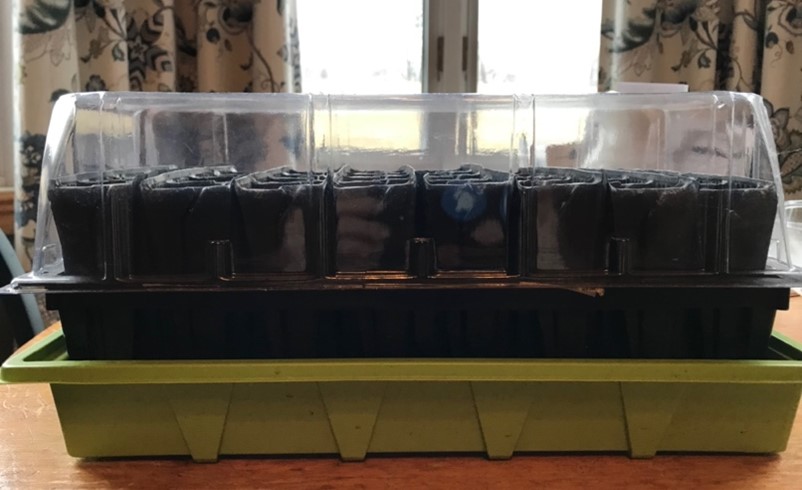
Starting the seed. Sweet peas have a hard outer coat. Many people soak the seed in water for 24 hr. prior to sowing to allow the seed coat to soften. There are others that “pre-sprout” the seeds by placing them in a folded wet paper towel that is placed in a plastic Ziploc bag and left in a warm place. Seeds are checked, those that have begun to sprout are planted into prepared pots. I have done both and found that the paper towel method results in a better germination rate but takes place over a much longer time period. Sweet peas take on average 14 -21 days to germinate when kept at 55-65 F. This time frame can vary widely between different varieties. This year, one variety was above ground before the others had even made an appearance. Once germinated, I grow my seedlings along at 50F which encourages root development and less top growth. Sweet peas are a climbing vine and require pinching when they are about 6-8 inches. Pinching encourages side shoots to develop which results in a stronger bushier plant.

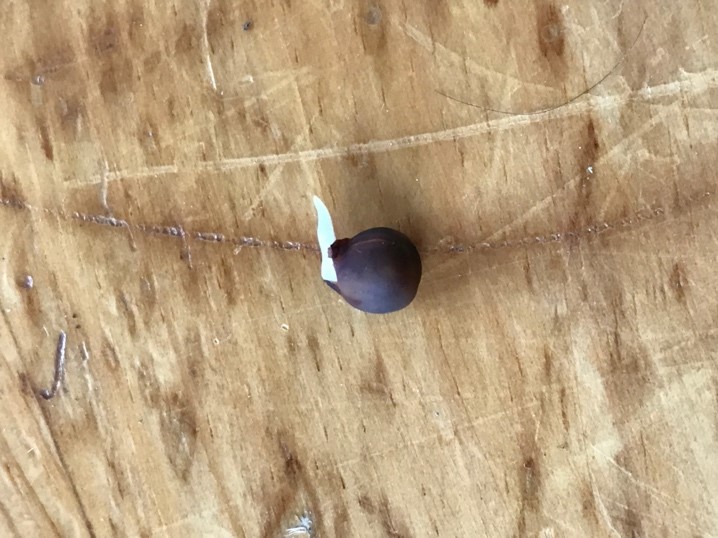
Seeds soaking (left) and seeds being presprouted in paper towel; Presprouted seed (right)
About a week before planting out, I start to harden the plants off in order that they will be able to withstand the move to outdoors in mid-April. Once hardened, they can be planted out.
Site selection. Sweet Peas prefer slightly alkaline, well drained soil that has been amended with organic matter (as they are heavy feeders). They should be kept moist and will require trellising. Although they are full sun plants, they benefit from protection the harsh afternoon summer sun. In my case, I grow them on two trellises on the east side of my brick house. This provides protection from the harsh western sunshine. As well, the brick of the house provides some warmth early in the season that helps to moderate any very cold weather events that may occur. The location near the house makes it easy to remember to provide supplemental water when needed.
Sweet Peas require deadheading or harvesting on a regular basis (twice per week) to prevent seed from developing as once seed formation takes place the plants ceases to flower. I harvest mine for cut flowers and while they have only a short vase life (4 days) the scent is wonderful in the house. During the heat of the summer, the plant will eventually stop flowering however it will start again in the cooler days of autumn.
A myriad of colours and varieties are available to choose from. Heritage varieties such as Cupani or Painted Ladies are still popular. There are many English Spencer types (large and very frilly although less tolerant of the heat). Modern selections such as Mammoth and Old Spice have been bred to be somewhat heat resistant. The Elegance series is a short day variety that can be planted for fall bloom.
Once you have sweet peas, you will find it difficult to go without them.
“Sweet peas were the kind of flowers fairies slept in.” Allison Pearson
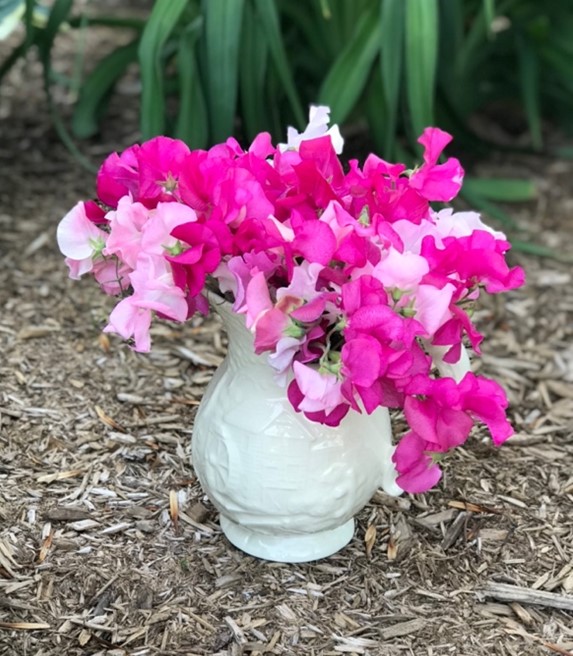
Resources
https://www.johnnyseeds.com/growers-library/flowers/sweet-peas/sweet-pea-production.html
https://www.drkeithhammett.co.nz
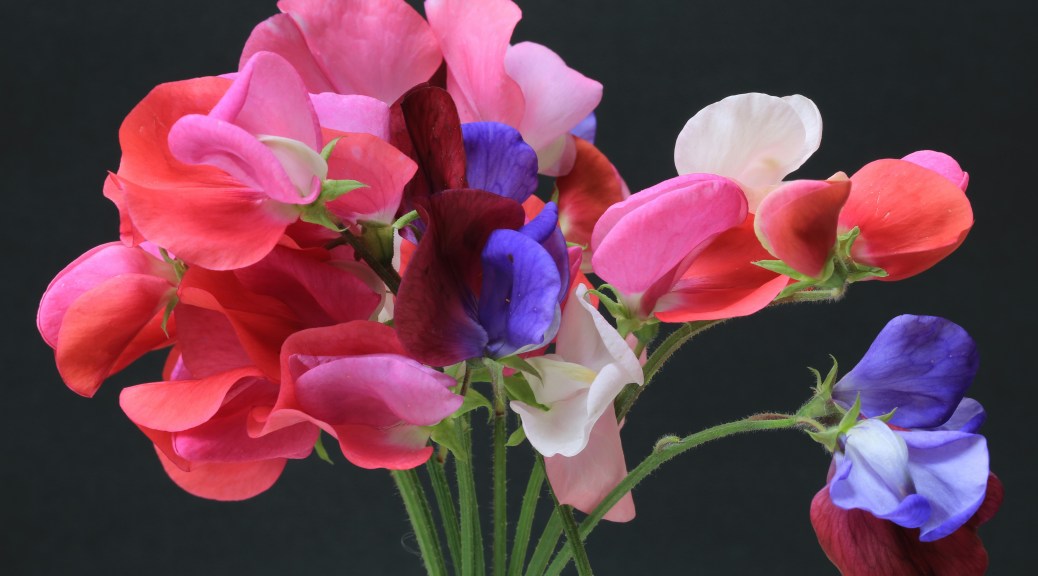
Good article, Marilyn. Can you also scarify seeds to help with germination?
LikeLike
Good point Chris. Nicking the seed coat in some way (scarification) makes the seed coat easier to crack for the developing embryo. In my case however, the seed is usually left unscathed and the gardener nicked.
LikeLike